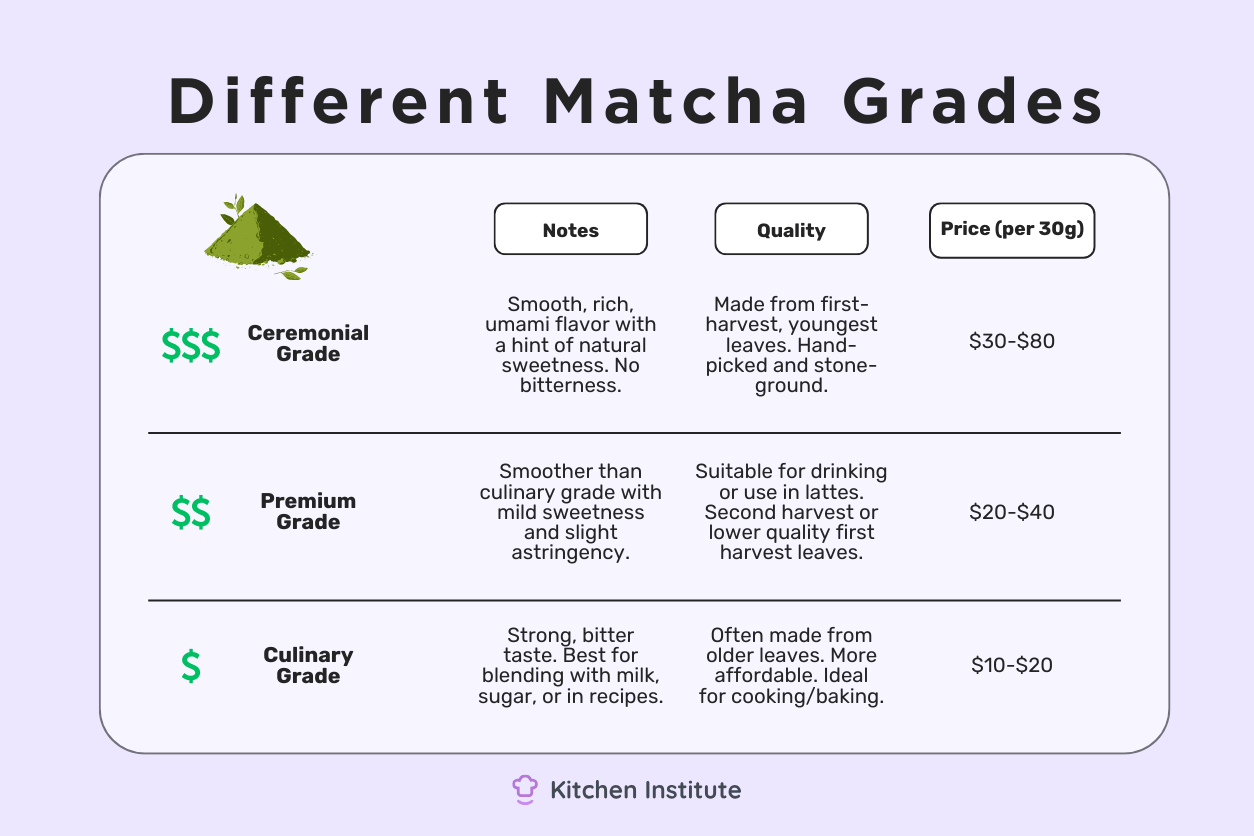What Is Ceremonial Grade Matcha and Why Is It So Expensive?

If you’ve ever wandered into a café offering a matcha latte, or taken a closer look at the shelves in a specialty tea shop, you might have noticed that not all matcha looks (or even tastes) the same. There’s the more budget-friendly culinary matcha, perfect for baking or lattes, and then there’s ceremonial grade matcha—the kind that commands a much higher price and is often spoken of with a reverence that suggests it’s something special. But what exactly makes ceremonial grade matcha stand out from the rest? And why does it come with such a hefty price tag?
What Is Matcha?
Matcha is a form of green tea that originates from Japan. Unlike typical loose-leaf teas, which are steeped in hot water and then discarded, matcha uses the whole leaf, ground into a super-fine powder. This method of consumption gives matcha its distinctive texture, vibrant color, and concentrated taste. The preparation of matcha is also unique. Rather than letting tea leaves steep in water, you whisk the powder directly into the water, creating a rich, frothy tea that’s as much about the experience as it is about the flavor.
Historically, matcha is linked to the Zen Buddhist monks who used it in meditative tea ceremonies. Over time, it became associated with mindfulness, ceremony, and a deeper appreciation for simplicity. But not all matcha is suited for this purpose, and that’s where the different grades come into play.
Different Grades of Matcha
When you’re shopping for matcha, you’ll typically come across three primary grades: ceremonial, premium, and culinary. Each has its own distinct characteristics, flavor profiles, and, of course, price points.

Culinary Grade Matcha
This is the matcha you’ll find used in lattes, smoothies, and recipes. While it’s still made from green tea leaves, culinary matcha tends to be more bitter and less refined than higher-grade options. It’s perfect for cooking or blending with milk and sugar, but on its own, the taste can be a bit harsh. This grade often comes from leaves that aren’t as tender or carefully selected, and its production is quicker and less expensive.
Premium Grade Matcha
A step up from culinary matcha, premium grade is more suited for straight tea drinking, but still affordable enough to use in a variety of ways. The flavor is smoother, with less bitterness, but it doesn’t quite reach the complexity of ceremonial grade matcha. It’s a good middle ground for those who want to enjoy a more refined taste without breaking the bank.
Ceremonial Grade Matcha
This is the highest quality matcha you can find, and it’s typically reserved for traditional tea ceremonies. Ceremonial grade matcha is made from the newest, most delicate tea leaves, usually from the first harvest of the season. These leaves are carefully shaded to enhance their chlorophyll content, giving the powder its vibrant green color and rich flavor. The result is a tea that’s smooth, subtly sweet, and lacking the bitterness found in lower grades. It’s designed to be enjoyed in its purest form, whisked with water and nothing else.
How Ceremonial Grade Matcha Is Made
One of the key reasons ceremonial grade matcha is so expensive comes down to how it’s produced. The process begins long before the tea leaves are even harvested. A few weeks prior to picking, the tea plants are covered with shade, limiting their exposure to sunlight. This allows plants to produce more chlorophyll, which gives the leaves their intense green color and higher concentration of nutrients, particularly L-theanine, an amino acid known for its calming effects.
The leaves used for ceremonial grade matcha are hand-picked, and only the youngest, most tender parts of the plant are selected. The leaves are steamed after harvest to prevent oxidation, preserving their bright color and delicate flavor. They are then carefully dried and ground into a fine powder using traditional stone mills. This process is slow—just 30g to 40g of matcha can take up to an hour to produce. This ensures that the leaves are ground without generating heat, which could degrade the quality of the tea.
Because of the labor-intensive methods used and the high standards required for ceremonial grade matcha, the final product is often much more expensive than other types of tea. But this meticulous process is what gives ceremonial matcha its smooth and creamy texture. It also has a subtle umami flavor, free from the bitterness or astringency found in lower grades.
Why Is Ceremonial Grade Matcha So Expensive?
At first glance, the price of ceremonial grade matcha might seem steep, but when you understand the labor involved and the quality of the ingredients, it starts to make sense. Several factors contribute to the higher cost:
Shading process: The shading of tea plants for several weeks before harvest requires significant labor and resources. It’s not just about limiting sunlight but controlling the environment to produce the best possible leaves.
Hand harvesting: The youngest and finest leaves are hand-picked for ceremonial grade matcha. This requires an extra level of care to maintain the quality of the leaves that make it into the final product.
Stone grinding: Using traditional stone mills is a slow and precise process. While modern machinery could speed things up, it would likely compromise the quality and flavor of the matcha.
Limited supply: The highest quality matcha can only be harvested once a year, and the yield is relatively small compared to lower-grade teas.
Ceremonial grade matcha stands out for its refined flavor and labor-intensive production process. It may come with a higher price tag, but the experience of enjoying a cup of ceremonial matcha is unmatched.
Our Recipe for Trust: Why Choose Kitchen Institute
At the Kitchen Institute, we're dedicated to providing reliable and accurate information on cooking trends, tips, and product reviews. Our team of passionate food enthusiasts ensures that every piece of content is thoroughly researched and based on real-world experience. We pride ourselves on our comprehensive and unbiased product reviews, rigorous research processes, and commitment to staying current with the latest culinary innovations. Trust us to enhance your culinary journey with quality insights and practical advice.